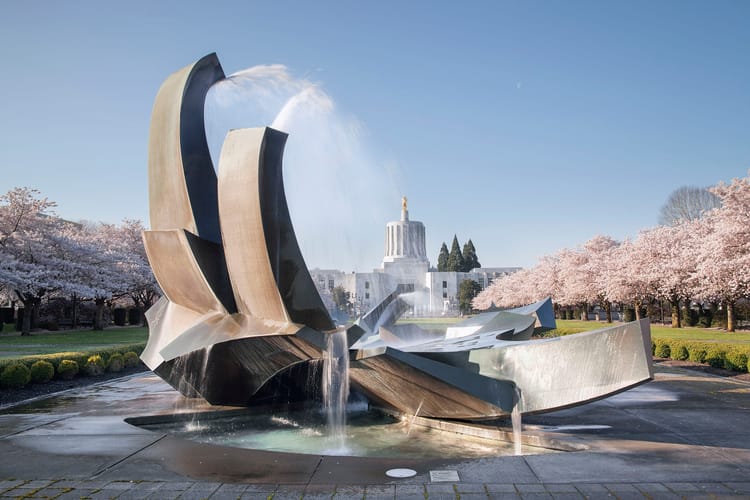Oregon Reopens Capitol to Regular Business

For the first time in nearly three years, Oregon’s legislature convened for in-person meetings and committee hearings this week. Although pandemic-era activity restrictions ended a year ago, the Capitol is going through a series of accessibility and seismic upgrades, resulting in the closure of many common areas and the enforcement of strict capacity limits. Still, the reopening of the Capitol to the public means a return to more normal activities and a more interactive legislative process.
Throughout the week, legislative committees began introducing topics for the five-month legislative session, beginning on Tuesday, January 17. One of the most prevalent issues lawmakers will address is restoring Oregon’s economic competitiveness for advanced manufacturing, including a robust package of regulatory and tax incentives to secure new large-scale private investment. Similarly, a network of social advocates is introducing a measure that would create an expansive refundable tax credit program aimed at using the tax code to provide cash transfers to low-income families to reduce child poverty. While the official start of the session is five weeks away, we are already in the trenches working through policy and the politics that arise from them.
More than in recent sessions, the politics of the state budget will likely over shadow policy-making throughout the session. Over the last few years, Oregon’s fiscal accounts were flush with revenue, buoyed by strong personal and business income, federal stimulus, and inflation. According to the state’s economists, the party will soon end with either a recession or a downturn. State revenues are expected to drop from their pandemic highs by $3 billion while government payroll and contracting costs skyrocket. The convergence of these fiscal realities means lawmakers will need to do more with fewer resources or find ways to raise revenue, neither of which are a small or painless feat.
Construction Likely to Interfere with Session
Although the Capitol building is finally accessible to the public and official business is no longer exclusive to video conference meetings, the ongoing construction will continue to disrupt the regular flow of activity. In particular, the closure of many common spaces drastically limits the building’s capacity. According to Legislative Facility Services, the building only has the capacity to hold 600 people, including legislators, staff, and building staff. In practice, the available capacity will be much lower as some of those groups are likely to be guaranteed entry into the building. On days when a controversial bill is scheduled for a hearing or if there is an organization holding a “lobby day,” or, heaven forbid, a grade school class tour, it may prove very difficult to gain entry into the building. Among lobbyists this week, a frequent topic of conversation was strategies to ensure their access to the building, some even half-jokingly saying they plan to bring suitcases and sleeping bags to make sure they don’t miss their meetings. I’ve said this before and I’ll say it again, Oregon never disappoints with a dull moment.





